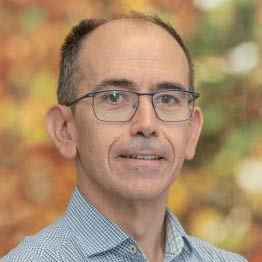05/10/2020
Published in
Diario de Navarra
David Galicia Paredes
Professor of the School of Sciences of the University of Navarra
 This year, the World Animal Day The current situation is one of uncertainty due to the future of the SARS-COV2 pandemic. In this context, recalling the importance of protecting animal species seems of little relevance, but nothing could be further from the truth. Obsessed with finding a way out of the impasse in which we find ourselves, we continue to think that we live apart from the rest of the species on our planet.
This year, the World Animal Day The current situation is one of uncertainty due to the future of the SARS-COV2 pandemic. In this context, recalling the importance of protecting animal species seems of little relevance, but nothing could be further from the truth. Obsessed with finding a way out of the impasse in which we find ourselves, we continue to think that we live apart from the rest of the species on our planet.
Like many other infectious diseases, COVID-19 is a zoonosis, a disease that has come to us through wildlife. This is neither rare nor novel. More than 60% of human pathogens are considered zoonotic and the rest are an inheritance from our evolutionary lineage. All species present adaptive characteristics to their habitat and parasites/pathogens are no exception; they are organisms highly specialized in living off their hosts, so much so that many cannot live in any other way than being linked to the specific environment provided by the species they parasitize. It is a close relationship that is established over a long period of time and manifests itself in a phenomenon known in biology as decoevolution: a process by which the species involved become inseparable partners in their evolutionary journey. As much as the parasitic life form is not very pleasant, it must be recognized that the strategy is effective, since it could be said that every free (non-parasitic) life form has at least one parasite in exclusivity.
At this point we might think that disease transmission between species should not be so easy since pathogens are highly adapted to a particular species. And so they are, but there are a couple of features of the relationship between the species involved that can greatly increase the likelihood of a parasite/pathogen making the jump between species. The first is that the host species and the species that could potentially become a new host are not too far apart evolutionarily. We share many more physical and physiological characteristics with species close to our lineage (for example, another mammal) than with more distant species (an insect) and this can facilitate the parasite's work; its adaptations are more likely to be compatible in the new host. The second variable to consider is the timing of exhibition. A short exhibition to the parasite (either in time or in the issue of parasites simultaneously arriving at the other organism) makes it unlikely that any individual will be comfortable with the new conditions posed by a potential host. However, with a prolonged exhibition time or a very high pathogen load the likelihood of this happening skyrockets.
There are many other conditions that we can evaluate, but with these ingredients we can already get an idea of what subject relationship we have with animals entails a higher risk of zoonosis: domestication. This tool has allowed us to multiply the productivity of our crops and livestock, but at the cost of adding not a few lines to our Catalog of diseases. It has been found that the issue of parasites/pathogens we share with domestic mammalian species is positively correlated with the length of time they have been domesticated, which is on the exhibition timeline we just saw. Fortunately, biologists and veterinarians have been dealing with this problem for many decades and both the diseases of domestic species and their impact on the population are well under control (in developed countries). It is true that COVID-19 does not come precisely from a domesticated species, but from a wild one subject to exploitation in certain parts of our planet. We must not forget that wild species play a role core topic since they are the reservoir of numerous diseases (which can be passed on to us directly or through domestic animals) and the natural laboratory where new parasites/pathogens with potential impact on our species are constantly emerging.
And this is the main moral of the whole thing. We cannot exploit Nature without Nature splashing us in some way. Interacting with animal species carries the risk of disease transmission. Zoonoses will continue to appear because they cannot be otherwise and we must begin to understand that we are part of a network of relationships that are part of the ecosystem. The better we know how this network works, the better prepared we will be to face future crises. We know that the loss of biodiversity increases the risk of the appearance of zoonotic diseases, so let's get down to work and start investing in knowing who our neighbors are and how to protect endangered species before the imbalances we generate in our ecosystems lead us to another dead end.
